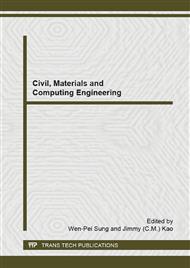p.812
p.816
p.820
p.824
p.828
p.833
p.837
p.843
p.847
Hardware-in-Loop Simulation Training System and Application on Ship-Borne Satellite Earth Station
Abstract:
The ship-borne satellite earth station was studied to establish a hardware-in-loop simulation system for employee training. Preliminary demand analysis for staff of all levels shows the complexity of this system. Based on the distributed simulation theory of HLA, system framework and implementation approach was proposed. Key technologies for modeling and simulation of ship-borne satellite earth station were discussed in this article. Subsequently the block diagrams of device simulator and simulation agent were clearly described. Finally the specific steps of operation were created to show the details of actual running process, which prove the feasibility of this system.
Info:
Periodical:
Pages:
828-832
Citation:
Online since:
December 2014
Authors:
Keywords:
Price:
Сopyright:
© 2015 Trans Tech Publications Ltd. All Rights Reserved
Share:
Citation:


